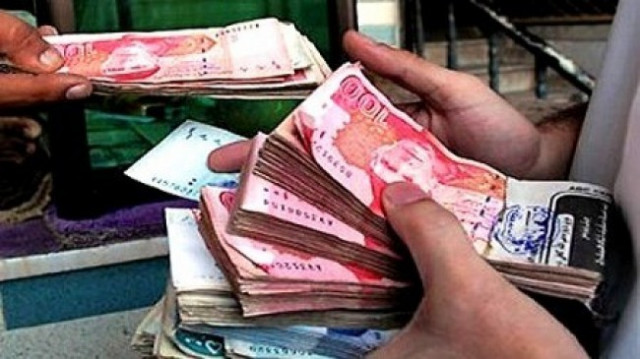Business
Rupee Hits All-Time Low Of 88.36 Against US Dollar; Likely RBI Intervention Caps Losses

Last Updated:
The rupee fell to 88.36 against the U.S. dollar, eclipsing its previous all-time low of 88.33 hit on September 1

Rupee depreciates against dollar.
The Indian rupee slipped to a record low on Friday as traders remained jittery over news related to U.S. tariffs on India, while likely dollar-selling intervention by the Reserve Bank of India curbed sharper losses, traders said.
The rupee fell to 88.36 against the U.S. dollar, eclipsing its previous all-time low of 88.33 hit on September 1. The currency was last at 88.2750, down 0.1% on the day.
Traders cited strong buying from foreign banks amid speculation about ongoing tariff pressures on India from the U.S.
The “spike on USD/INR was caused by worries of higher tariffs on India but state-run banks stepped in over 88.30 to cap losses, most likely on behalf of the Reserve Bank of India,” a senior trader at a bank said.
Merchant flows are relatively muted today so activity is skewed towards the dollar buying side, the trader added.
MUFG said the rupee could weaken to 89 by the first quarter of calendar year 2026 under the assumption that the steep tariffs remain for now but are eventually lowered to 25% sometime next year.
Foreign portfolio investors have continued to withdraw from Indian equities with net sales of $1.4 billion so far in September, taking the total outflow so far this year to over $16 billion.
(This story has not been edited by News18 staff and is published from a syndicated news agency feed – Reuters)

Aparna Deb is a Subeditor and writes for the business vertical of News18.com. She has a nose for news that matters. She is inquisitive and curious about things. Among other things, financial markets, economy, a…Read More
Aparna Deb is a Subeditor and writes for the business vertical of News18.com. She has a nose for news that matters. She is inquisitive and curious about things. Among other things, financial markets, economy, a… Read More
September 05, 2025, 13:28 IST
Read More
Business
7th Pay Commission Nears End: What’s Next For Railway Salaries In 2026?

Last Updated:
Implemented in 2016, the 10-year term of the 7th Pay Commission will end in January 2026.
Stay Ahead, Read Faster
Scan the QR code to download the News18 app and enjoy a seamless news experience anytime, anywhere.


The 7th Pay Commission resulted in a 14–26% salary hike for railway employees. Implemented in 2016, its 10-year term will end in January 2026. According to an Economic Times report, Officials say Indian Railways is now focusing on cost-cutting and operational efficiency to ensure future pay revisions do not strain its finances.
Business
FIIs Sell Equity Worth Rs 15,959 Crore In Dec So Far, DIIs Buy For Rs 39,965 Crore

New Delhi: The foreign institutional investor (FII) selling is likely to decline in days to come as the economy is doing well, prospects for earnings growth are improving, and mutual fund SIPs are performing well, analysts said on Saturday.
In December so far, FIIs have sold equity worth Rs 15,959 crore through the exchanges.
This FII sell figure has been completely eclipsed by the domestic institutional investor (DII) buying for Rs 39,965 crore during this period, said market watchers.
“Sustained selling in India when the prospects for growth and earnings look bright is not a sustainable policy,” said Dr. VK Vijayakumar, Chief Investment Strategist, Geojit Investments Ltd.
A healthy feature of the investment behaviour of retail investors is the steady inflows into mutual fund SIPs, which have been consistently above Rs 29,000 crore during the last three months.
SIP inflows in November remained almost steady at Rs 29,445 crore, according to data released by the Association of Mutual Funds in India (AMFI).
According to Vijayakumar, this has enabled the DIIs to absorb the sustained selling by FIIs.
“FIIs have been sustained sellers in December, so far, selling on all days. It would be difficult for the FIIs to sell continuously and maintain a high short position in the market in the context of healthy SIP inflows, particularly when the economy is doing well and the prospects for earnings growth are improving,” he noted.
According to analysts, it is also important to understand that rupee depreciation, sustained FII selling, delay in the finalisation of US-India trade deal and the ongoing AI trade are all temporary drags on the markets.
In November, both FIIs and DIIs were net buyers (to the tune of USD 40 million and USD 8.7 billion, respectively) in the Indian equity market.
Over the last 12 months, the Indian primary markets have seen FII net inflows to the tune of Rs 823 billion (USD 9.5 billion) while secondary markets have seen FII net outflows of Rs 2,144 billion (USD 24.5 billion), according to a note by JM Financial.
In November, India’s weight in the MSCI Emerging Markets Index was 15.8 per cent against 15.2 per cent in October and 19.9 per cent in November.
According to analysts, the most important factor that will dictate the direction of the market is the earnings growth, and this looks promising for FY27.
Business
China’s smaller manufacturers look to catch the automation wave – The Times of India

In a light-filled workshop in eastern China, a robotic arm moved a partially assembled autonomous vehicle as workers calibrated its cameras, typical of the incremental automation being adopted even across smaller factories in the world’s manufacturing powerhouse.China is already the world’s largest market for industrial robots, and the government is pouring billions of dollars into robotics and artificial intelligence to boost its presence in the sector.
The first essentially humanlessfactoriesare already in operation, even as widespread automation raises questions about job losses as well as the cost and difficulty of transition for smaller and medium-sized companies. The answer for many is a hybrid approach, experts and factory owners told AFP. At the autonomous vehicle workshop, manager Liu Jingyao told AFP that humans are still a crucial part of even technologically advanced manufacturing. “Many decisions require human judgement,” said Liu, whose company Neolix produces small van-like vehicles that transport parcels across Chinese cities. “These decisions involve certain skill-based elements that still need to be handled by people.”At the Neolix factory, 300 kilometres (186 miles) north of Shanghai, newly built driverless vehicles zoomed around a testing track simulating obstacles including puddles and bridges.In a closed-off room, workers assembled vehicles’ “brains”, testing their cameras and computer chips.“Automation… primarily serve(s) to assist humans, reducing labour intensity rather than replacing them,” Liu said.But Ni Jun, a mechanical engineering expert at Shanghai’s Jiaotong University, said China’s strategy of focusing on industrial applications for AI means full automation is already feasible in many sectors.Among others, tech giant Xiaomi operates a “dark factory” — where the absence of people means no need for lights — with robotic arms and sensors able to make smartphones without humans.– Digital divide –Ni described a “digital divide” between larger companies with the funds to invest heavily in modernisation, and smaller businesses struggling to keep up.For Zhu Yefeng’s Far East Precision Printing Company, part of China’s vast network of small independent factories employing up to a few dozen people each, full automation is a distant dream.At the company just outside Shanghai, workers in small rooms fed sheets of instruction manuals into folding machines and operated equipment that printed labels for electronic devices.The company used pen and paper to track its workflow until two years ago, with managers having to run around the factory to communicate order information.“Things were, to put it bluntly, a complete mess,” Zhu told AFP.The company has since adopted software that allows employees to scan QR codes that send updates to a factory-wide tracker.On a screen in his office, Zhu can see detailed charts breaking down each order’s completion level and individual employees’ productivity statistics.“This is a start,” Zhu told AFP. “We will move toward more advanced technology like automation, in order to receive even bigger orders from clients.”Financial constraints are a major barrier though. “As a small company, we can’t afford certain expenses,” said Zhu. His team is trying to develop its own robotic quality testing machine, but for now humans continue to check final products.– Employment pressures –The potential unemployment caused by widespread automation will be a challenge, said Jacob Gunter from the Berlin-based Mercator Institute for China Studies. “Companies will be quite happy to decrease their headcount… but the government will not like that and will be under a lot of pressure to navigate this,” Gunter told AFP.Beijing’s push to develop industrial robots will “intersect with the need for maintaining high employment at a time when employment pressure is considerable”, he added. Going forward, manufacturers must strike a balance “between the technical feasibility, social responsibility, and business necessity”, Jiaotong University’s Ni told AFP.Zhou Yuxiang, the CEO of Black Lake Technologies — the start-up that provided the software for Zhu’s factory — told AFP he thought factories would “always be hybrid”. “If you ask every owner of a factory, is a dark factory the goal? No, that’s just a superficial description,” Zhou said. “The goal for factories is to optimise production, deliver things that their end customers want, and also make money.”
-

 Politics6 days ago
Politics6 days agoThailand launches air strikes against Cambodian military: army
-

 Tech1 week ago
Tech1 week agoWIRED Roundup: DOGE Isn’t Dead, Facebook Dating Is Real, and Amazon’s AI Ambitions
-

 Sports1 week ago
Sports1 week agoAustralia take control of second Ashes Test | The Express Tribune
-

 Politics6 days ago
Politics6 days agoZelenskiy says Ukraine’s peace talks with US constructive but not easy
-

 Fashion6 days ago
Fashion6 days agoGermany’s LuxExperience appoints Francis Belin as new CEO of Mytheresa
-

 Business1 week ago
Business1 week agoNetflix to buy Warner Bros. film and streaming assets in $72 billion deal
-

 Politics1 week ago
Politics1 week ago17 found dead in migrant vessel off Crete: coastguard
-

 Politics3 days ago
Politics3 days agoTrump launches gold card programme for expedited visas with a $1m price tag













